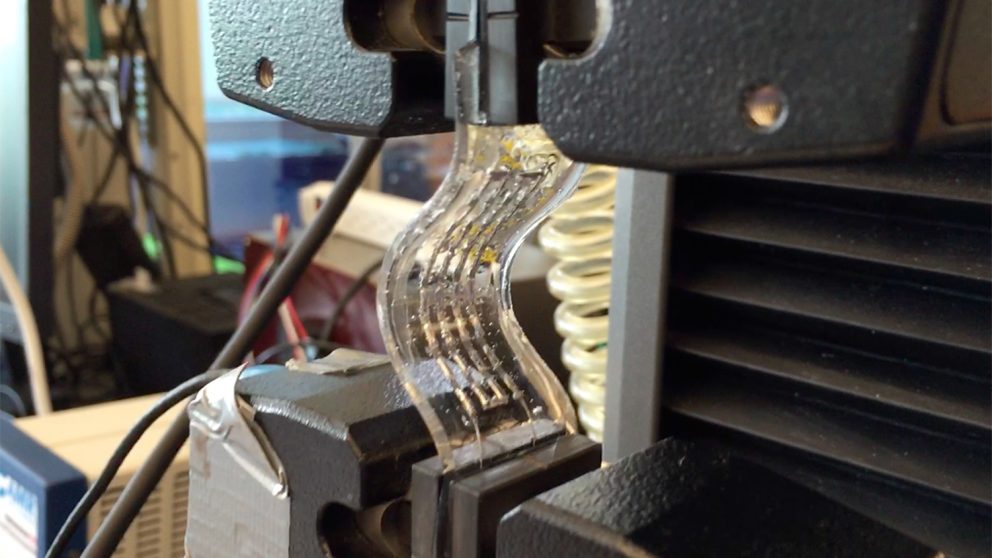
NC State’s thermoelectric harvester has the material quality of rigid devices inside a flexible package. Photo courtesy of Mehmet Ozturk, NC State University.
Wearable electronic devices may soon be more effective thanks to a new flexible thermoelectric energy harvester.
Researchers from North Carolina State University have developed the new technology, which may rival the effectiveness of current wearable electronic devices.
“We wanted to design a flexible thermoelectric harvester that does not compromise on the material quality of rigid devices yet provides similar or better efficiency,” Mehmet Ozturk, a professor of electrical and computer engineering at NC State and corresponding author of a paper describing the work, said in a statement. “Using rigid devices is not the best option when you consider a number of different factors.”
Ozturk and his research team utilized the best thermoelectric materials used in rigid devices in a flexible package to enable manufacturers to avoid developing new materials when creating flexible devices.
However, one of the challenges for flexible harvesters is that it is difficult to connect thermoelectric elements in series using reliable, low-resistivity interconnects.
“We use a liquid metal of gallium and indium – a common, non-toxic alloy called EGaIn – to connect the thermoelectric ‘legs’,” Ozturk said. “The electric resistance of these connections is very low, which is critical since the generated power is inversely proportional to the resistance: Low resistance means more power.
“Using liquid metal also adds a self-healing function: If a connection is broken, the liquid metal will reconnect to make the device work efficiently again,” he added. “Rigid devices are not able to heal themselves.”
Ozturk will now work on improving the efficiencies of flexible devices by using materials and techniques to further eliminate parasitic resistances.
Wearable electronics have several applications including long-term health and performance monitoring. The reduction in power levels consumed by sensors and electronic circuits, as well as advancements in energy harvesting methods, allow for the realization of self-powered monitoring systems that do not need batteries.
The study was published in Applied Energy.




